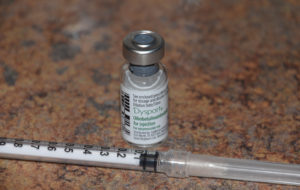
To date, no large scale studies have been published that can support or refute these supposed properties that Dysport provides. In the November 2009 issue of the journal Plastic and Reconstructive Surgery, the results from a clinical trial that evaluated the effectiveness of Dysport for glabellar lines was published. I presume that this information is what made up most, if not all, of the manufacturer’s submitted clinical data to the FDA for consideration for approval.
This was a phase III, double-blind, placebo-controlled study that was conducted in 27 centers and involved 816 patients. Patients were stratified by race and received a single treatment with Dysport or a placebo based on a variable dose that differed for women and men. They were evaluated up to 150 days after treatment. In essence, this was a very well designed and conducted clinical study.
In reading the results, one can draw the following conclusions of clinical relevance. First, onset of the effects of Dysport were seen as early as 24 hours with a mean onset of 4 days. This does seem earlier than that of Botox and so the rumor that Dysport has an earlier onset of action does seem to be true. But it is not always within the first 24 hours but rather days. This means that it kicks in a few days earlier than Botox on average. The mean duration of effect for Dysport averaged slightly less than 110 days. When compared to Botox, this is a very comparable length of active time. The rumor that Dysport lasts longer than Botox appears to be just that…a rumor not fact. What is very interesting in the study is that the response and duration of action was slightly higher in African American patients. They do not speculate as to why.
A cost analysis was not done as part of this clinical study nor would it be appropriate for a clinical investigation. The study shows that there is not a dose comparison between Dysport and Botox as everyone knows. Given that the ‘average’ dose of Botox for the glabella is around 20 units, Dysport doses ranged from 50 to 80 units based on muscle mass and sex of the patient. That equals roughly 2.5 to 3 units of Dysport to 1 unit of Botox in dose administration. Knowing that ratio should help physicians and patients determine if they are getting a Dysport treatment that is equal to or less in cost than that of Botox.
The rumors that Dysport is ‘better’ than Botox are not substantiated in this large clinical study. It does show that it is just as effective and does offer a true competitive analogue. Whether it will cost less is determined completely by the pricing and incentives that your local provider may or may not give.
Dr. Barry Eppley
Indianapolis, Indiana


